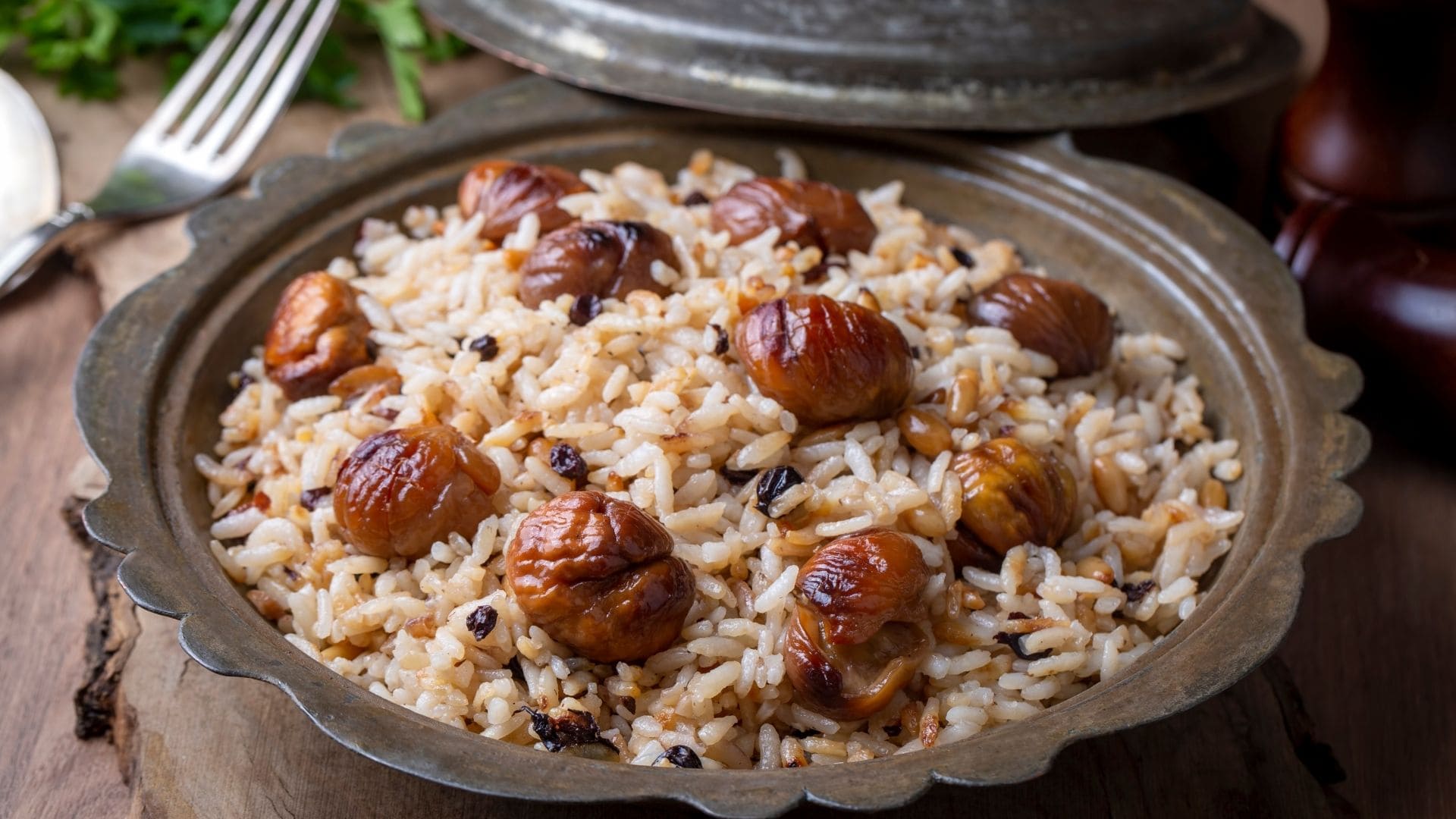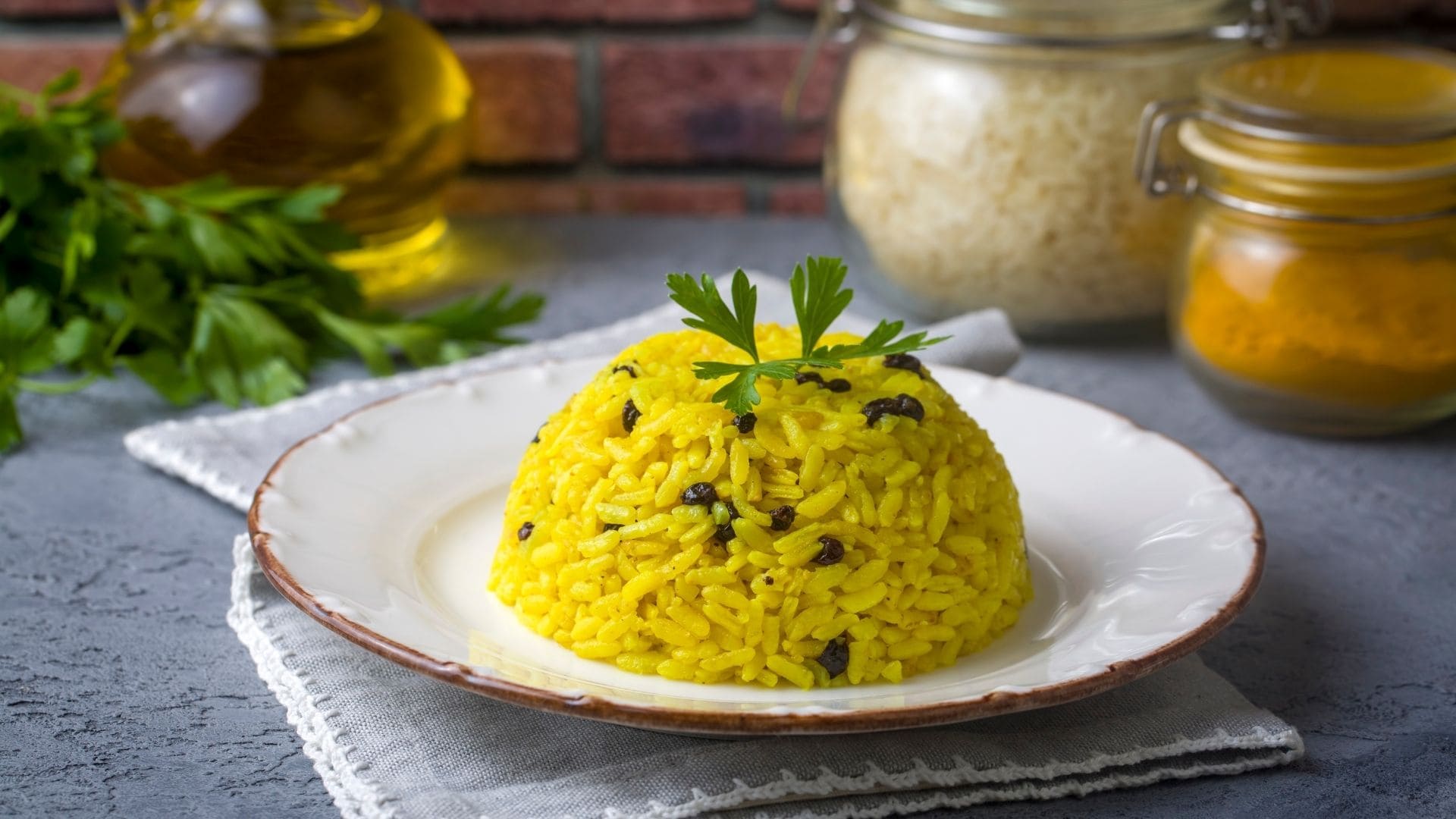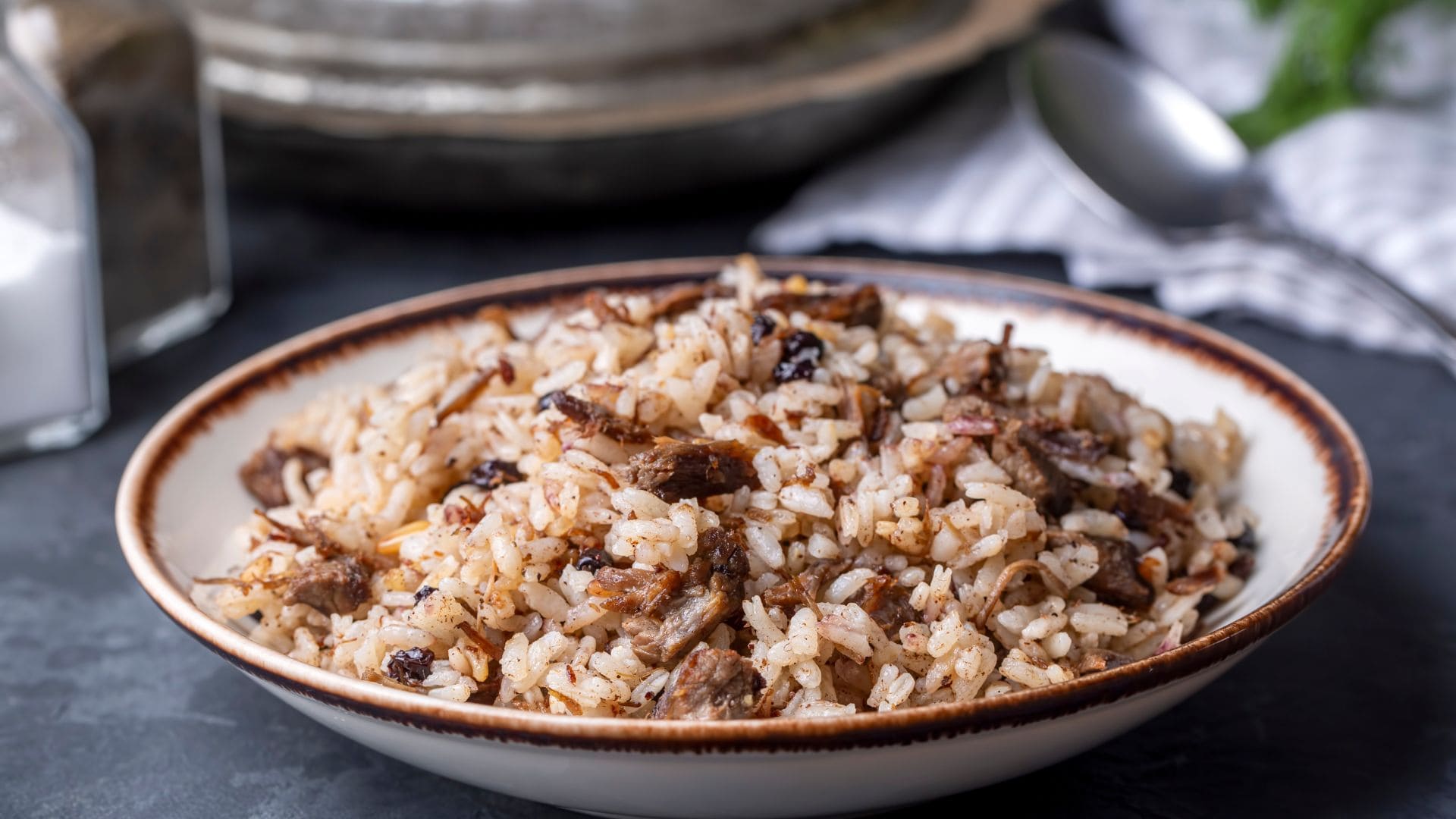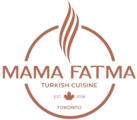In Turkish cuisine, rice dishes hold a special place, whether as a hearty pilaf served with meat or a creamy dessert like sütlaç (rice pudding). Turkish rice dishes are flavorful, often enriched with spices, broths, and a delicate cooking technique that ensures fluffy, tender grains. At Mama Fatma, with locations in Mississauga, we prepare authentic, helal Turkish dishes, including our rice specialties that bring out the best in Middle Eastern and Mediterranean flavors.
If you’re looking to master Turkish rice dishes at home or simply want to learn more about what makes Turkish rice so unique, this guide will walk you through the essentials of choosing, prepping, cooking, and serving rice Turkish-style. And if you’re near Toronto, Ontario, Canada, you’re always welcome to join us at Mama Fatma and experience authentic Turkish rice dishes prepared by experts.
Blog Contents
ToggleChoosing the Right Rice for Turkish Dishes
The type of rice you use plays a huge role in achieving the perfect texture for Turkish rice dishes. Turkish cuisine primarily uses two types of rice, each with its unique qualities:
- Baldo Rice: This is a short-grain rice grown in Turkey that’s known for its fluffy, slightly sticky texture. Baldo rice is ideal for Turkish rice pilaf because it absorbs flavors well, making it perfect for pairing with spices and broths.
- Jasmine or Long-Grain Rice: While Baldo rice is a traditional favorite, long-grain rice is also used, especially for a lighter, fluffier pilaf. Long-grain rice tends to cook up less sticky, resulting in separate, fluffy grains that many people prefer.
For those who want to recreate a recipe for Turkish rice at home, starting with high-quality rice like Baldo will make a noticeable difference. But if you’re not up for the cooking challenge, come by Mama Fatma to taste Turkish rice dishes made from the finest ingredients.

How to Wash and Prep Rice Properly
One of the secrets to Turkish rice that’s light and fluffy is proper washing and preparation. Washing removes excess starch from the rice, which prevents it from becoming too sticky. Here’s how to wash rice the Turkish way:
- Rinse Thoroughly: Place the rice in a bowl and rinse it under cold water. Swirl the rice gently with your hand, and drain the water. Repeat this process until the water runs clear (usually three to four times).
- Soak the Rice: Once the rice is clean, soak it in cold water for about 15-20 minutes. This softens the rice grains, allowing them to cook evenly and absorb more flavor.
- Drain and Dry: After soaking, drain the rice well. For extra fluffiness, spread the rice out on a clean towel to dry slightly before cooking.
At Mama Fatma, our chefs take the time to properly rinse and prep rice, ensuring that each grain reaches its ideal texture. For anyone asking, “How do I get Turkish rice to be fluffy?” these preparation steps are essential.
The Secret to Fluffy Pilaf
In Turkish rice pilaf, achieving a fluffy, tender texture is all about the technique. Turkish pilaf is a staple dish in Turkish cuisine and is often served as a side dish with meats or stews. Here’s a step-by-step guide to perfecting a fluffy pilaf:
- Sauté in Butter or Olive Oil: Start by melting butter or heating olive oil in a pot. Add the rice and sauté it for a few minutes. This step helps coat the grains in fat, which prevents them from sticking together during cooking.
- Add Vermicelli or Orzo (Optional): For an added touch of flavor and texture, many Turkish cooks add a handful of vermicelli or orzo pasta to the rice. Toast the pasta in the oil or butter until golden brown before adding the rice.
- Use the Right Liquid Ratio: The general rule is to use 1.5 to 2 cups of liquid per cup of rice. For an extra boost of flavor, use broth instead of water.
- Cook on Low Heat: Bring the liquid to a gentle simmer, cover the pot, and reduce the heat to low. Allow the rice to cook undisturbed for 15-20 minutes.
- Let It Rest: Once the rice is done, remove it from the heat and let it rest for about 10 minutes before fluffing it with a fork.
If you’re wondering how to make Turkish rice that’s perfectly fluffy and aromatic, this technique is key. At Mama Fatma, we use traditional methods to prepare our pilaf, which pairs beautifully with our Turkish meat dishes.

Adding Flavor with Broth and Spices
What sets Turkish rice apart from other types of rice is the depth of flavor. Rather than cooking rice in water alone, Turkish recipes often use broth, spices, and aromatics to infuse the rice with flavor.
- Broth: Using chicken, beef, or vegetable broth adds a rich, savory depth to the rice. This is particularly common in Turkish meat and rice recipes, where the broth from the meat enhances the flavor of the pilaf.
- Spices: A small amount of cumin, allspice, or cinnamon can be added for an aromatic touch. In dishes like rice Turkish-style with lamb, these spices bring out the warmth and earthiness of the meat.
- Aromatics: Onion and garlic are often sautéed with the rice at the beginning of the cooking process. This step builds a flavorful base that enhances the overall taste of the dish.
Our chefs at Mama Fatma have perfected these flavoring techniques to create rice dishes that complement the flavors of our meats, vegetables, and sauces. If you’re looking for an authentic recipe Turkish rice, a visit to Mama Fatma is a great way to taste these flavors in person.
Cooking Techniques for Turkish Rice
Turkish rice dishes are varied, but a few cooking techniques stand out. Here are some techniques used in Turkish rice recipes that you can try:
- Absorption Method: The absorption method is common in Turkish cooking. By simmering the rice in broth and allowing it to absorb all the liquid, you get flavorful, fluffy rice without any excess moisture.
- Oven-Baked Rice: For special occasions, rice is sometimes baked in the oven after being cooked on the stovetop. This technique adds an extra layer of richness and makes the rice golden and slightly crispy on top. Baked rice can be found in more elaborate Turkish rice pilaf recipes.
- Layering with Meat and Vegetables: In dishes like Turkish meat and rice recipes, meat, vegetables, and rice are layered and cooked together, allowing the flavors to meld. One example is etli pilav, a Turkish pilaf with lamb or beef, where the rice absorbs the juices from the meat.
Each of these techniques has its unique touch, and you can experience their results at Mama Fatma, where we take great care to replicate traditional Turkish cooking methods. Our Turkish rice dishes are made with attention to detail, creating a perfect pairing for our grilled meats and vegetable dishes.

Serving Turkish Rice Dishes
In Turkish cuisine, rice is typically served as a side dish, but it can also be a main course in dishes like pilaf with lamb. Here are some popular ways to serve Turkish rice:
- As a Side Dish: Turkish rice pilaf is often served alongside meat dishes like kebabs, kofta, or grilled chicken. The fluffy texture and rich flavor of the rice balance the hearty taste of meats, making it a classic combination at Mama Fatma.
- Paired with Vegetables and Yogurt: A typical Turkish meal includes rice, vegetables, and a dollop of yogurt or Turkish yogurt sauce. The cool, tangy yogurt enhances the flavor of the rice and provides a refreshing contrast to warm spices.
- With Turkish Desserts: Rice also features in Turkish dessert rice pudding known as sütlaç. This creamy, comforting dessert is made by cooking rice with milk, sugar, and vanilla, then baking it until it forms a golden crust. Sütlaç is the perfect way to end a Turkish meal on a sweet note.
At Mama Fatma, we serve a variety of rice dishes that showcase the versatility of Turkish food rice. Whether you’re enjoying rice with a savory main course or as a sweet dessert, our menu offers authentic Turkish flavors that bring comfort and satisfaction.
Mastering Turkish rice dishes involves more than just cooking rice—it’s about using the right ingredients, techniques, and flavors to create something truly special. At Mama Fatma in Toronto, Ontario, Canada, our chefs use traditional methods to bring you the best in Turkish, Middle Eastern, and Mediterranean cuisine.
For those who want to experience Turkish rice dishes made with high-quality, helal ingredients, Mama Fatma’s locations in Mississauga are ready to welcome you. Come and savor the rich, aromatic flavors of our rice pilaf, lamb pilav, and even Turkish rice pudding sütlaç. Join us for a true taste of Turkey, and let us show you why Turkish rice dishes are so beloved worldwide.

Turkish Sauces and What They’re Used For
In the world of Turkish cuisine, sauces are rarely just simple condiments; they are functional, flavor-enhancing masterpieces. Unlike the ubiquitous ketchup or mayonnaise found elsewhere, Turkish sauces—or more accurately, dips

How to Order Turkish Food for the First Time: A Stress-Free Guide
Trying a new cuisine is an adventure—a mix of excitement and maybe a little nervousness when looking at an unfamiliar menu. You want to order something delicious, authentic, and something

Why Turkish Dining Is Ideal For Slow Evenings
In the constant rush of life in Toronto, Ontario, the evening often feels like another race against the clock. We eat quickly, distracted, and often leave the table feeling full

How Turkish Cuisine Connects Cultures
Food is perhaps the most universal language we share. It requires no translation, crosses every border, and speaks directly to memory and comfort. And among the world’s great traditions, Turkish

What Makes Turkish Pide Fillings So Creative
When you think of flatbreads with toppings, you probably think of pizza. But in Turkey, there is a culinary masterpiece that takes the concept of a savory filling to a

How To Order Turkish Food For Large Groups
Planning a dinner for a large group—a corporate event, a big family reunion, or a celebration with friends—can feel like navigating a culinary minefield. Everyone has different preferences, and the


